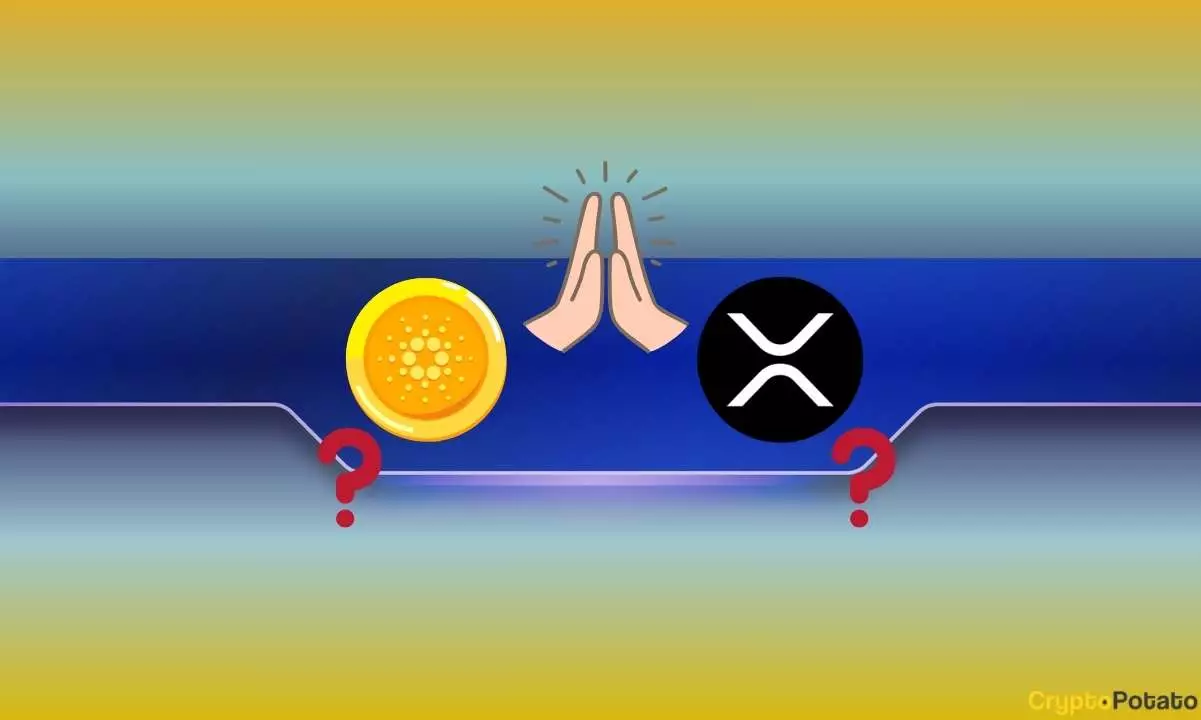In recent interactions between prominent figures in the cryptocurrency sector, particularly Charles Hoskinson of Cardano and Brad Garlinghouse of Ripple, a narrative of reconciliation and potential collaboration has emerged. This is particularly intriguing given the historically contentious relationship between the two ecosystems, particularly with Hoskinson’s previous remarks about Ripple and its community. Instead of maintaining an adversarial stance, Hoskinson has taken steps to foster dialogue and explore cooperative ventures, signaling a potential shift in how these influential leaders might navigate the increasingly complex landscape of cryptocurrency regulation and innovation.
Hoskinson’s conversation with Garlinghouse was characterized by mutual respect, with Hoskinson commendably referring to Garlinghouse as “a great CEO.” The recognition of Garlinghouse’s collaborative approach sends a strong message to the wider crypto community, emphasizing the need for unity to advocate for improved regulatory frameworks. While the specifics of their discussion remain under wraps, there is a palpable sense of optimism surrounding the prospects of collaboration, especially in light of the pressing need for clarity within the regulatory environment for cryptocurrencies.
The dialogue didn’t end there. Hoskinson also engaged with Ripple’s Chief Technology Officer, David Schwartz, discussing the integration of Ripple’s XRP token with Cardano’s Midnight privacy-focused sidechain. Such technical discussions often serve as precursors to more formal partnerships. Hoskinson’s own remarks highlighted the productive nature of the conversation, while Schwartz’s endorsement of Midnight indicates a shared interest in innovation and technological advancement.
Forging New Paths Together
This newfound warmth is particularly noteworthy given Hoskinson’s previous criticisms of the Ripple community as “toxic and petty.” His abrupt turnaround—offering an apology and signaling a willingness to build bridges—reflects a conscious decision to move beyond past grievances. For an industry often characterized by divisiveness and tribalism, this shift may pave the way for a more cohesive approach, perhaps encouraging other leading figures in the sector to reassess their relationships.
With Hoskinson also taking a proactive stance in shaping the regulatory framework by assisting governmental entities, the potential for both Cardano and Ripple to influence policy positively cannot be overlooked. The dual efforts to engage with political leaders could help establish a more favorable climate for blockchain and cryptocurrency innovation, underscoring the importance of cooperation in the face of regulatory challenges.
As whispers of partnership grow louder, both communities—Cardano’s and Ripple’s—stand on the brink of transformative changes. Collaborative initiatives could yield significant advancements for not only the entities involved but for the broader ecosystem as well. By working together, these once-rival platforms may redefine scalability, interoperability, and the regulatory landscape within the cryptocurrency industry.
The evolution of the relationship between Charles Hoskinson and Ripple’s leadership underscores the potential for unity amidst diversity in the crypto arena. As Hoskinson and Garlinghouse set their sights on collaboration and mutual growth, it holds promise for a more aligned future, aligning not only their visions but also potentially transforming how cryptocurrencies operate in harmony within a broader regulatory framework.















